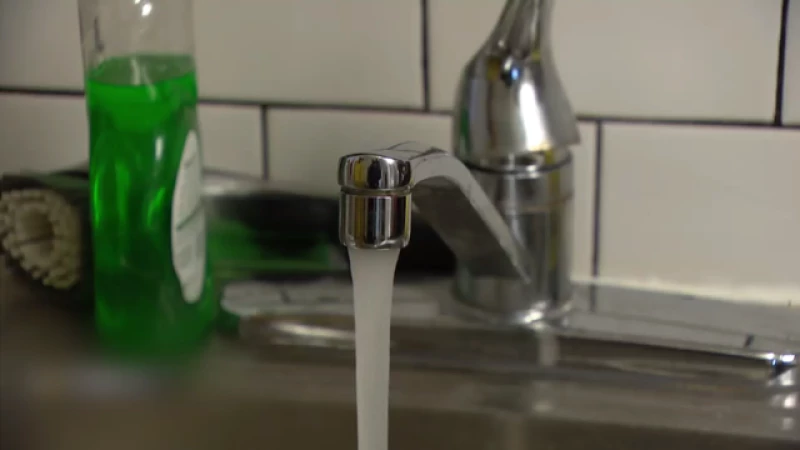CHICAGO (CBS) -- Shocking findings from a recent study reveal that an estimated two-thirds of children under the age of 6 have been exposed to lead through their drinking water.
The study highlighted a concerning trend where predominantly Black and Latino communities were both less likely to be tested for lead and more likely to be exposed to contaminated drinking water.
Published in the journal JAMA Pediatrics, the study disclosed that a staggering 68% of young children in Chicago, totaling 129,000 individuals, have encountered lead-contaminated drinking water. Additionally, 19% of these children rely on unfiltered tap water as their main source of drinking water.
Researchers conducted a retrospective assessment of lead exposure using data from 38,385 household lead tests gathered between January 2016 and September 2023, sourced from Department of Water Management records. The study employed machine learning and microsimulation techniques to estimate the extent of childhood lead exposure across the city.
Study Finds Widespread Lead Contamination in U.S. Drinking Water
A recent study revealed that water in many areas of the United States is contaminated with lead, posing a serious health risk to residents. The study determined water to be contaminated if most tests within a census block showed a lead concentration of 1 part per billion (ppb) or more on the second draw. This threshold was chosen because any amount of lead in drinking water is considered unsafe, and one ppb is the detection limit in lead water tests.
The researchers warned that elevated levels of lead in children's blood can lead to cognitive development issues and other health problems. The study highlighted the potential population-level impact of long-term exposure to lead-contaminated water, suggesting that it could result in lower average IQ levels and increased rates of preterm births.
Interestingly, the study found disparities in water consumption habits among different racial groups. Black and Latino households were more likely to drink bottled water, while white households tended to consume tap water. However, the study noted that bottled water is not necessarily safer, as the FDA allows up to five ppb of lead in bottled water. Additionally, using filtered tap water does not always eliminate the risk of lead exposure.
"The disparities in racial and ethnic groups that exist point to the various ways in which environmental racism can take shape. The lower screening rates, reduced consumption of tap water, and higher levels of lead exposure in predominantly Black and Hispanic neighborhoods may suggest a lack of trust in water sources or a lack of engagement from relevant authorities," the report stated. "Communities with high-risk estimates and low screening rates were predominantly concentrated in the South and West sides of the city, reflecting the historical segregation and lack of investment in these areas."
Leading the study is Benjamin Huynh, an assistant professor at the Johns Hopkins Bloomberg School of Public Health. He reiterated that any amount of lead in water poses a risk.
"Our objective should be to eliminate all lead from water," Huynh emphasized. "Even small traces of lead in water can have detrimental effects on a child."
However, Huynh cautioned against drawing parallels between the study's findings and well-known water crises of recent years.
"We shouldn't overreact," Huynh commented. "The situation is not as severe as the Flint crisis. Children won't end up in the hospital due to the levels of lead we are observing. Nevertheless, there is reason for concern - because even these low levels of lead can impact a child without immediate notice."
Furthermore, exposure to lead-based paint dust continues to be the primary source of elevated blood lead levels in children in Chicago. This is why the Chicago Department of Public Health has prioritized thorough lead-based paint and dust inspections and mitigation efforts, particularly in the most affected communities.
In a recent statement, the Chicago Department of Water Management raised concerns about the methodology used in a study, stating that the sampling only determined the presence of lead service lines and not the regular exposure levels.
Furthermore, the city emphasized that lead testing results have consistently met the standards set by the U.S. Environmental Protection Agency.
Chicago currently has approximately 380,000 lead service lines, with estimates suggesting that the total replacement cost could reach $9 billion.
The Department of Water Management confirmed that they have implemented five programs aimed at replacing the lead service lines across the city and are providing free water testing for residents.
In a separate development last November, the Biden administration allocated a $336 million low-interest loan to Chicago through the Water Infrastructure Finance and Innovation Act. This funding is designated for replacing up to 30,000 lead pipes in the city.
The study in question was authored by Elizabeth Chin from the Johns Hopkins Bloomberg School of Public Health and Mathew Kiang from the Stanford University School of Medicine.







